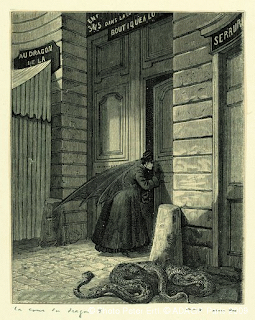The Ha-Ha Crystal
Tuesday, 16 August 2011
"The Ha Ha Crystal": the lecture, 7pm 29 Aug, Zurich Kunsthalle
by Chris Fite-Wassilak Monday, August 29, 7 pm
Kunsthalle at Museum Bärengasse, Bärengasse 20–22, 8001 Zürich
Winding a trail from Lewis Carroll’s hookah-smoking Caterpillar to Jacques Tati’s Playtime via the Situationists, ‘The Ha Ha Crystal’ is an exploration of the slippery narrative surface between the viewer and the viewed, seen through the prism of the comic speech bubble. Using a brand of narratological phenomenology to highlight the speech bubble’s unique properties, the familiar icon becomes a floating cipher for exploring the unbreakable tenacity of narrative and its problems of authorship and authority.
The talk attempts to give a skewed set of possible answers to Robert Smithson’s question: “[R. Buckminster] Fuller was told by certain scientists that the fourth dimension was ‘ha-ha’, in other words, that it is laughter… Laughter is in a sense a kind of entropic ‘verbalisation.’ How could artists translate this verbal entropy, that is ‘ha-ha’, into solid models?”
Chris Fite-Wassilak is a writer, curator and critic based in London.
Public lecture (in English) organised by Michael Hiltbrunner, Forum KK, and Colin Guillemet, as part of the Human Valley Club at Kunsthalle Zürich. Generously supported by the Swiss Society for Cultural Studies (SGKW).
Saturday, 7 May 2011
onward reverberations
Friday, 6 May 2011
i wonder what i will be in my next life
at 7:10 - 8:32, from Scenes From the Life of Any Warhol (1990), accompanied by sound from the Velvet Underground's first appearance at in the Dom in April 1966
Thursday, 5 May 2011
and if we steal the cards?
page 1 from the 1966 flyer The Return of Durutti Column, distributed around Strasbourg University as well as posted up on city walls, providing what would become the house style of Situationist detournement. Pages 2-4 can be seen here.
Wednesday, 4 May 2011
Tuesday, 3 May 2011
playing the harmony but in no way moved by it
The voice over draws sources ranging from Plato to Neil Badmington's Alien Chic: Posthumanism and the Other Within (2004). More of their work can be seen here.
Thursday, 28 April 2011
there was conflict within the system
Can Altay, Minibar, 2003
Installation at Platform Garanti Contemporary Art Centre, Istanbul, as part of the 'Making Space' exhibition. An interview with Can discussing the piece can be read here.
Wednesday, 27 April 2011
Tuesday, 26 April 2011
Thursday, 21 April 2011
Wednesday, 20 April 2011
I'm wary of your surprises
an image from Anri Sala's short video Intervista (1998), a 3 min clip of which can be seen here on Medici TV. Described here by the distributor Icarus, and here one review on OffOffOff
Tuesday, 19 April 2011
Saturday, 16 April 2011
a sublime, dignified beauty
Friday, 15 April 2011
Thursday, 14 April 2011
Wednesday, 13 April 2011
Tuesday, 12 April 2011
Friday, 8 April 2011
remember me- the army
Wednesday, 6 April 2011
Monday, 4 April 2011
Saturday, 2 April 2011
The jokes are done
as well as a different version of the same sketch from another performance here:
Friday, 1 April 2011
Thursday, 31 March 2011
Objectivity isn't the answer, either
English translation of the voice-over:
'Undeniable energy, enthusiasm, and the will to work. A faith that the future will be as bright as the past was dark. Huge gaps, and a firm determination to fill them. While recording these images of the Yakutsk capital as objectively as possible, I frankly wondered whom they would satisfy. Because of course you can’t describe the Soviet Union as anything but the worker’s paradise, or, as hell on earth.
For example: “Yakutsk: capital of the Yakutsk autonomous Soviet socialistic republic is a modern city, in which comfortable buses made available to the population, share the streets with powerful ZIMs, the pride of the Soviet automobile industry, in the joyful spirit of socialist emulation, happy Soviet workers, among them this picturesque denizen of the Arctic reaches, apply themselves to making Yakutsk an even better place to live.”
Or else: “Yakutsk is a dark city with an evil reputation. The population is crammed into blood colored buses, while the members of the privileged caste brazenly display the luxury of their ZIMs, a costly and uncomfortable car at best. Bending to the task like slaves, the miserable Soviet workers, among them this sinister looking Asiatic, apply themselves to the primitive labor of grading with a drag beam.”
Or simply: “In Yakutsk, where modern houses are gradually replacing the dark older sections, a bus less crowded than its London or New York equivalent at rush hour passes a ZIM, an excellent car, reserved for public utilities departments on account of its scarcity. With courage and tenacity under extremely difficult conditions, Soviet workers, among them this Yakut, afflicted with an eye disorder, apply themselves to improving the appearance of their city, which could certainly use it.”
But objectivity isn’t the answer either. It may not distort Siberian realities, but it does isolate them long enough to be appraised and consequently distorts them all the same. What counts is the drive and the variety. A walk through the streets of Yakutsk isn’t going to make you understand Siberia. What you need might be an imaginary newsreel shot all over Siberia. I might screen it for you in the town’s spanking new movie theater. And the commentary would be made up of those Siberian expressions that are already pictures in themselves.'
- Chris Marker, Lettre de Sibérie, 1958



































